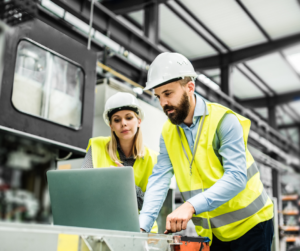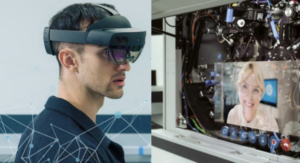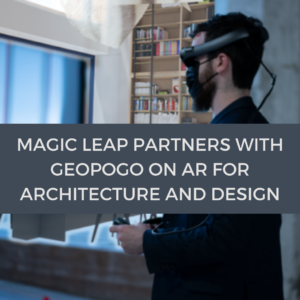Pandemic Drives New Use Cases for Assisted Reality Wearables

When there’s a need for an expert to inspect an oil rig or train someone to repair a vehicle, companies used to fly the expert in to do the task in person. More and more, though, companies are learning that when workers in the field are equipped with assisted reality wearables, the expert can help them from a remote location.
The “see what I see” capability of these devices with a head-mounted camera and display allow the expert in a remote location to see what someone else is seeing on site. The expert can also give the person wearing the device verbal instructions and visual instructions through the display. In addition, the person in the field can use the device hands-free.
This kind of “remote expert guidance” has been a common use case for RealWear equipment since the company’s founding five years ago, but it was accelerated when the pandemic prevented people from traveling. Now that more companies have experienced the alternative, and the savings in travel costs and experts’ time, many are likely to stick with it.
“We think this is the new normal, that not everybody needs to travel all the time,” Rama Oruganti, chief product officer at RealWear, told PYMNTS. “There are certain tasks that can be done remotely as long as you have the right point of view, you can see the things and you have the tools in place to make remote work possible in that way.”
Providing Information Without Distracting From Hands-On Work
RealWear launched the latest generation of its industrial-strength wearables on Dec. 8. Assisted reality wearables like the new RealWear Navigator 500 incorporate the digital world but do not immerse the user in it or put it in the user’s field of vision. Instead, with assisted reality, the digital world is right below the user’s field of view, so they need only look down to see it — just as the driver of a car would glance down at the dashboard, Oruganti explained. In industrial uses cases that often include hazardous environments, it’s important that the user’s field of view not be obstructed, he added.
“Industrial frontline workers are the people who can use most of the helpful things that might come out of the metaverse,” Oruganti said. “So, we are trying to take those and put it into the hands of the people who need it the most.”
The RealWear Navigator 500 is two-thirds the weight its predecessor, so it’s easier to wear during an eight-hour shift; it’s two-thirds the width of the earlier device, so that the center of gravity is closer to the user’s temple and the perceived weight is lower; it’s rugged enough to be dropped from a height of 2 meters without damage, and it’s modular so the camera and display can be changed in the future.
Enabling Digital Workflow and Visual Assist
Another growing use case for these devices involves inspections in which the user is on site and doesn’t need remote assistance. This “digital workflow” use case applies the product’s ability to respond to voice command and to record what the user sees. While inspecting equipment, for example, the user can mark off items on a checklist with verbal commands and can record what they’re seeing. Previously, this would be done by marking the items off on paper and later entering that information into a laptop.
“That was one of the big things we resolve,” Oruganti said. “One, you reduce paperwork errors; two, you save time, and three, you have visual documentation.”
A third growing use case for this equipment is “visual assist.” If someone is repairing a piece of equipment and needs to see the blueprint as they work, they can see it on the display on the wearables. What’s more, they can track around that piece of paper and zoom in on the part they need.
“It’s like someone’s holding a seven-inch tablet at arm’s length with that information for you, so that’s very helpful,” Oruganti said.
Displaying IoT Data When It’s Needed
Assisted reality wearables can also display information from the sensors on a piece of equipment so that the user can see if a machine is too hot or spinning too fast, for example, without having to read the dial. The Internet of Things (IoT) data is funneled into the display and the user can see it when they want it.
“[Assisted reality] and [virtual reality] are going to be big — they’re already big and they’re growing fast,” Oruganti said. “The big immediate use case for a lot of people in the real world is going to be in industry. There are 100 million industrial frontline workers — the kind of people we are targeting — so we are trying to take the best in class of things that are applicable here without being distracting and without taking away their hands.”








